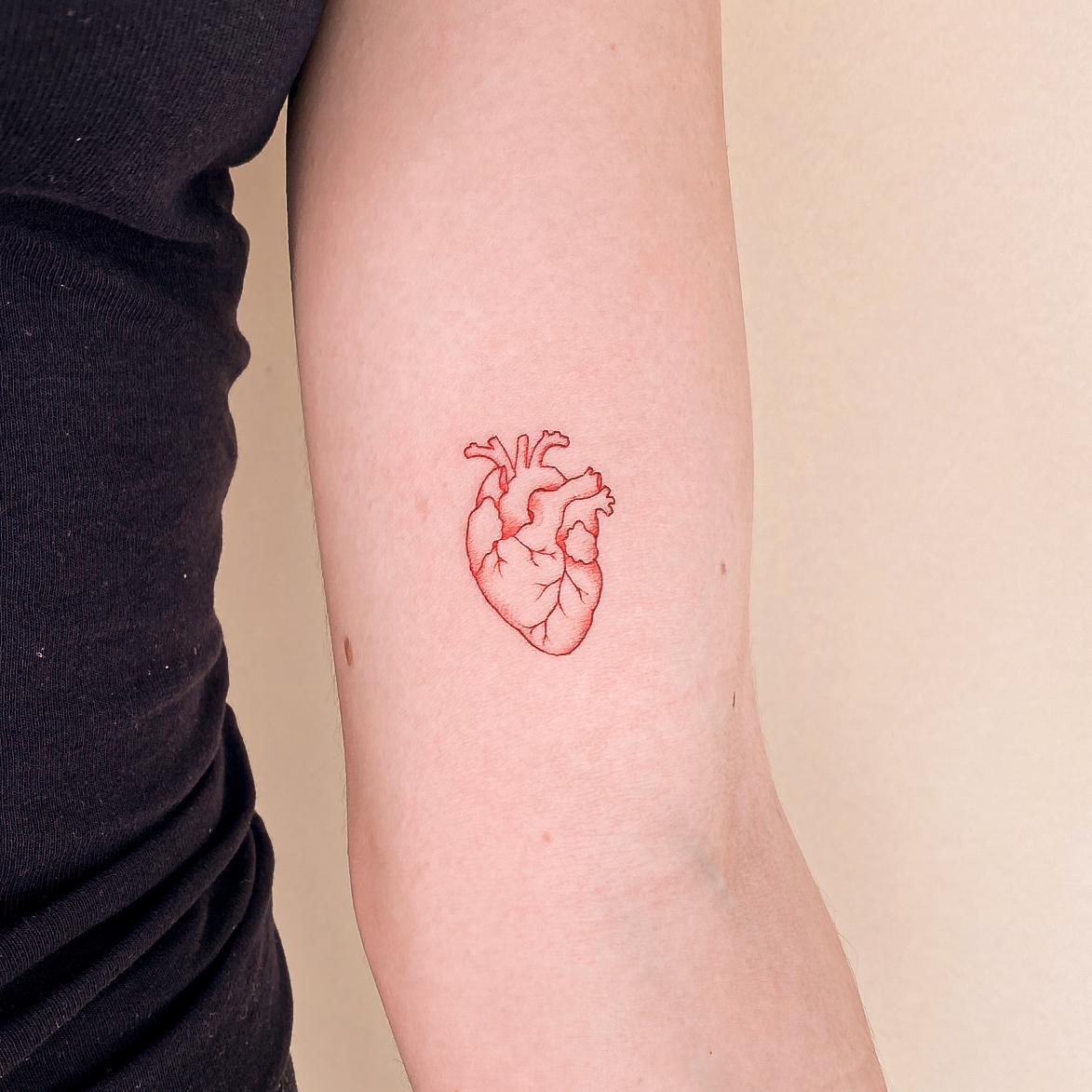
Tattoo myths are everywhere. From aftercare confusion to colorful ink debates, the tattoo world is full of bold claims, and even bolder tattoo myths. But how many of these myths are actually true? Whether you’re planning your first piece (👀 check out our highly talented artists here!) or are already a walking art gallery, this quiz is here to challenge what you think you know.
How many can you guess right?
✅ Fact.
Yes, you can donate blood after getting a tattoo, but you’ll need to wait a few months. In the Netherlands, the minimum wait is four months after your latest tattoo (this timeframe may vary by country).
Tattooing introduces ink (which is a foreign substance) into your body. This can affect your immune system and potentially your bloodstream, which is why a waiting period is required. Also handy to know for all the vampires among us.
✅ Fact.
Where you place your tattoo affects how the ink settles over time. Areas with thin or highly mobile skin (like hands, fingers and elbows), and areas that are exposed to a lot of sunlight are more prone to ink migration or fading due to constant stretching and movement. All this means is that touch-ups or slight adjustments might be more required than less mobile body parts.
✅ Fact.
Red tattoo ink is one of the most common colors to trigger allergic reactions, often due to mercury sulfide. Reactions may include redness, bumps, or itchiness. Please note that the group that is affected is still minimal compared to those that are not.
If you’re worried about a reaction, you can ask your tattoo artist about allergy testing (such as a test dot), especially if you have sensitive skin. For flare-ups, antihistamines or topical hydrocortisone may help, but always consult a doctor first!
❌ Fiction.
You can totally get a tattoo if you have a chronic skin condition like eczema or psoriasis- just avoid doing it during a flare-up. You and your artist can talk about placement and potential adjusted aftercare instructions, depending on the severity of the condition.
👉Learn more about getting a tattoo with autoimmune diseases here
❌ Fiction.
Fine-line tattoos can fade faster than bold traditional styles. All this means is that a few more touch-ups might be required throughout your lifetime than a bolder tattoo.
However, a skilled tattoo artist knows how to ensure any style — from fine line to blackwork — lasts beautifully with proper technique and placement.
👉Curious about the different tattoo styles? Check out our blog about tattoo styles here!
✅ Fact.
Sun exposure can cause fading and discoloration, especially on fresh tattoos. That’s why tattoo aftercare includes keeping your ink out of direct sunlight (aforementioned vampires would have the best looking tattoos of all time, fyi).
And if you want your ink to keep looking pristine, you are also stuck with applying broad-spectrum SPF once healed until you’re lowered into the ground (or oven).
👉Read our Tattoo Aftercare Guide here
❌ Fiction.
People with darker skin absolutely can get colorful tattoos. The key is choosing shades that complement your melanin and finding an artist experienced in tattooing on richly pigmented skin.
Melanin or not- everyone deserves to get exactly the art piece they feel inspired to immortalize.
✅ Fact.
Most professional artists will advise against tattooing over birthmarks or moles. These areas help you track skin changes over time, which is vital for early skin cancer detection. So please check your skin regularly, lovely people!
❌ Fiction.
Tattooing over scars is possible, but it’s not always straightforward. Scar tissue is more sensitive and unpredictable than healthy skin. The way ink settles can vary, and healing may take longer or result in patchiness.
There are different types of scars (like keloid, hypertrophic, or flat scars), and each reacts differently to tattooing. A consultation with an experienced artist (like Hanne) is essential before committing.
Bonus tip: Wait at least 12-18 months after the injury or surgery before tattooing over a scar, and always check with your doctor if you’re unsure.
👉 Check out our article about tattooing over scars here
✅ Fact.
Color tattoos can sometimes take slightly longer to heal than black ink, especially if multiple colors are packed into the same area. That’s because the skin is worked more to get vibrant pigment saturation.
Additionally, some color pigments are thicker or harder for the skin to absorb, which can lead to longer healing or a higher chance of scabbing. But with proper aftercare (hydration, avoiding sun, 🗣NO SCRATCHING!), the healing process is usually smooth.
✅ Fact.
Even though we wish all tattoos were created equal- tattoo style can definitely influence how it ages. Styles like watercolor or realism often use lighter shading and subtle gradients, which can fade more quickly than bold, high-contrast styles like traditional or tribal.
These styles rely on soft transitions and minimal outlines, which are more vulnerable to fading over time. Especially, say it with us, 🗣without sun protection.
That’s why at BlackBear Ink we emphasize sun protection, high-quality ink and skilled placement to make delicate styles last longer.
Let us know which of these facts caught you off guard or which ones you’ve heard before but weren’t sure were true.
Have more questions about tattooing or aftercare? Drop us a message or explore our blog!
share